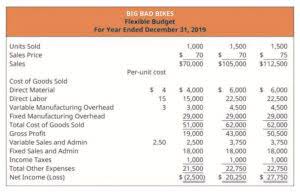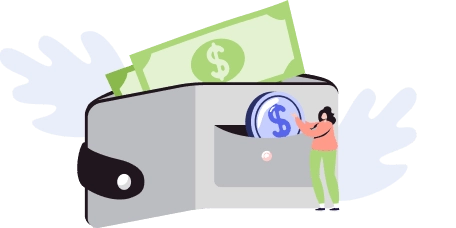
The ordering system is based on how close the payment date is, so a liability with a near-term maturity date will be listed higher up in the section (and vice versa). Unlike the assets section, which consists of items considered cash outflows (“uses”), the liabilities section comprises items considered cash inflows (“sources”). Current liabilities are used as a key component in several short-term liquidity measures. Below are examples of metrics that management teams and investors look at when performing financial analysis of a company. In addition, liabilities impact the company’s liquidity and, in the case of debt, capital structure. Get instant access to lessons taught by experienced private equity pros and bulge bracket investment bankers including financial statement modeling, DCF, M&A, LBO, Comps and Excel Modeling.
- The current portion of long-term debt due within the next year is also listed as a current liability.
- The long-term portion of a bond payable is reported as a long-term liability.
- Commercial paper is also a short-term debt instrument issued by a company.
- In isolation, total liabilities serve little purpose, other than to potentially compare how a company’s obligations stack up against a competitor operating in the same sector.
- “Where people start getting into a lot of trouble is they start buying things on debt assuming they’re going to have money left for their other goals, and it never ends up working that way,” Swanburg says.
Current (Near-Term) Liabilities
When preparing a balance sheet, liabilities are classified as either current or long-term. HighRadius Autonomous Accounting Application consists of End-to-end Financial Close Automation, AI-powered Anomaly Detection and Account Reconciliation, and Connected Workspaces. Delivered as SaaS, our solutions seamlessly integrate bi-directionally with multiple systems including ERPs, HR, CRM, Payroll, and banks. Our AI-powered Anomaly Management Modulehelps accounting professionals identify and rectify potential ‘Errors and Omissions’ on a daily basis so that precious resources are not wasted during month close. It automates the feedback loop for improved anomaly detection and reduction of false positives over time. We empower accounting teams to work more efficiently, accurately, and collaboratively, enabling them to add greater value to their organizations’ accounting processes.
- Liabilities and equity are listed on the right side or bottom half of a balance sheet.
- Lawsuits and the threat of lawsuits are the most common contingent liabilities but unused gift cards, product warranties, and recalls also fit into this category.
- Current liabilities (also known as short-term liabilities) must be paid back within a year and include lines of credit, the current portion of long-term loans, accrued wages, and accounts payable.
- Below are examples of a few types of small businesses and the assets and liabilities they may have.
- Analysts and creditors often use the current ratio, which measures a company’s ability to pay its short-term financial debts or obligations.
- The bond issuer (company) must pay a coupon (interest) based on coupon rate and face value.
- It automates the feedback loop for improved anomaly detection and reduction of false positives over time.
Should a company retain as much working capital as possible?
- You can calculate your total liabilities by adding your short-term and long-term debts.
- Based on prevailing interest rates available to the company, it may be most favorable for the business to acquire debt assets by incurring liabilities.
- These expenses are not considered liabilities since they represent obligations that have already been met.
- We’re firm believers in the Golden Rule, which is why editorial opinions are ours alone and have not been previously reviewed, approved, or endorsed by included advertisers.
- Accrued Expenses – Since accounting periods rarely fall directly after an expense period, companies often incur expenses but don’t pay them until the next period.
- Long-term liabilities are a company’s financial obligations that are due more than one year in the future.
- Check your financial health score to get a more detailed look at your spending and saving habits and find out how you can improve.
No recognition is given to the fact that the present value of these future cash outlays is less. The present value is related to the idea of the time value liabilities list of money. Get granular visibility into your accounting process to take full control all the way from transaction recording to financial reporting.
Total Liabilities: Definition, Types, and How To Calculate
Unearned revenue is money received or paid to a company for a product or service that has yet to be delivered or provided. Unearned revenue is listed as a current liability because it’s a type of debt owed to the customer. Once the service or product has been provided, the unearned revenue gets recorded as revenue on the income statement.
- HighRadius offers a cloud-based Record to Report Suite that helps accounting professionals streamline and automate the financial close process for businesses.
- A person or business can also be held liable from a legal standpoint; therefore, liability insurance is frequently purchased as a form of financial protection.
- Liabilities are a vital aspect of a company because they’re used to finance operations and pay for large expansions.
- Non-current or Fixed Liabilities – Second among types of liabilities is non-current or fixed liabilities; they are long-term obligations of a business and are not payable within a year or an accounting period.
- Accounts payable are essentially several bills awaiting payment that have not yet been settled.
Debt obligations are common among individuals, companies, and governments. Generally, the degree to which liabilities are used often determines their quality. Liabilities are obligations to provide resources such as goods, services, or currency to satisfy outstanding debt. As your business grows and you take on more debt, it becomes even more important to understand the difference between current and long-term liabilities in order to ensure that they’re recorded properly.
Resources for YourGrowing Business

Liabilities are categorized as current or non-current depending on their temporality. They can include a future service owed to others such as short- or long-term borrowing from banks, individuals, or other entities or a previous transaction that’s created an unsettled obligation. Investors can discover what a company’s other liabilities are by checking out the footnotes in its financial statements.

Everything You Need To Build Your Accounting Skills
Typically, vendors provide terms of 15, 30, or 45 days for a customer to pay, meaning the buyer receives the supplies but can pay for them at a later date. These invoices are recorded in accounts payable and act as a short-term loan from a vendor. By allowing a company time to pay off an invoice, the company can generate revenue from the sale of the supplies and manage its cash needs more effectively. In short, a company needs to generate enough revenue and cash in the short term to cover its current liabilities. As a result, many financial ratios use current liabilities in their calculations to determine how well or how long a company is paying them down. Companies segregate their liabilities by their time horizon for when they’re due.

If this is not the case, they should be classified as non-current liabilities. Other definitely determinable liabilities include accrued liabilities such as interest, wages payable, and unearned revenues. Liabilities are generally divided into many categories; two of those categories are current liabilities and long-term liabilities.
Measurement and Valuation of Current Liabilities
A similar ratio called debt-to-assets compares total liabilities to total assets to show how assets are financed. Short-term, or current liabilities, are liabilities that are due within one year or less. They can include payroll expenses, rent, and accounts payable (AP), money owed by a company to its customers. Assets are what a business owns, and liabilities are what a business owes. Both are listed on a company’s balance sheet, a financial statement that shows a company’s financial health.
